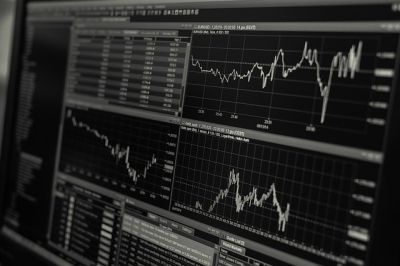New To Stock Investing? You Need This Helpful Glossary Of Common Terms

If you have never dabbled with the world of stock investments before, the idea of doing so likely sounds rather daunting. Investments, stocks, shares, and the world of high finance can be incredibly off-putting, due in no small part to the huge variety of very specific investment-related terms that are used.
If you have found the language of investments particularly off-putting, then the glossary below should help to provide the introduction you need to feel confident.
The world of investments is rich with opportunity and promise, so don’t let a minor issue like terminology hold you back.
See this glossary as your starting point, then expand your knowledge from there.
Bear market

A bear market is a worrying sign. It means that prices are falling, and more people are selling stocks and shares that are buying them. Both stock and bond markets can become bear markets in difficult economic conditions.
The term “bear market” first entered into common usage during the South Sea Bubble, and has stuck ever since.
Bull market
A bull market is the opposite of a bear market: it is when the markets are rising, and is considered a good time to buy stocks, shares, bonds, and other forms of investment.
A bull market is a confident market and one where there is a potential for profit.
Dividend Capture
Dividend capture is a complex form of investment that involves only holding company stock for long enough to receive a company dividend.
It is not a good choice for those who are new to this form of investing. If you want to learn more, there’s a helpful post here, but do be careful.
Dow Jones Industrial Average
The Dow Jones Industrial Average — which is primarily just referred to as the “Dow” — is a stock market index. It shows how 30 large, publicly-owned companies have traded during a standard trading session and are used as an indicator of the strength of the US markets.
Minimum Investment
Most stocks, shares, and trading investments will have a minimum investment required if you wish to buy stock. Amounts vary, but usually, start around $250, and can be as high as $2000.
If you wish to start investing with less, it is possible, but potentially more expensive in terms of fees. If you interested in getting started in trading then you may want to check out this eToro review. This review gives a great overview and is helpful if you’re new to all of this.
Mutual Fund
A mutual fund is a professional investment fund that is managed by financial experts on behalf of a pool of investors. The investments from the individuals in the pool are used to purchase stocks, shares, or bonds. By buying as a collective, transaction costs and fees are substantially reduced when compared to what each pool member could expect to pay if buying individually.

NASDAQ Composite Index
The NASDAQ is a stock exchange that comprises over 3,000 different stocks. The performance and strength of the NASDAQ are seen as an indicator of domestic economic health.
Portfolio
The stocks, shares, bonds, or other investments that you hold are collectively referred to as your portfolio.
Swing trading
Swing trading is a form of investing that takes advantage of the fact that markets always move up and down— or swing. Unlike many forms of trading and investments, swing trading involves holding your position for relatively long periods of time. If you want to know more, there’s plenty more info about swing trading strategies online.
S&P 500
The S&P 500 is a stock market that is based on the market capitalization of 500 major companies. Like the NASDAQ and the Dow Jones, the health of companies in the S&P 500 is seen as an indicator of broader economic health.
Stocks and Shares
The stock of a company is sold in shares. These shares represent a fractional share of ownership in a publicly-traded company. Owners of company stocks and shares have a claim to the assets and profits the company generates.
Treasury bond
Treasury bonds, also known as T-bonds, are a fixed-interest debt security issued by the US government with a maturity of 10 to 30 years. The money that the US treasury earns from the selling of treasury bonds is used to pay for public services and other costs relating to the running of the country.
In conclusion
Obviously, the terms above merely allow you to dip a toe into the waters of investment and trading terminology— but everyone has to start somewhere. With a baseline established, you can build from there, and slowly piece together the investing know-how that you need.




